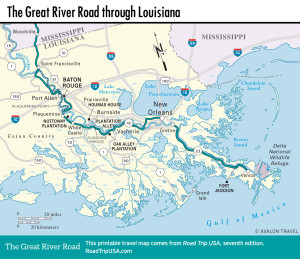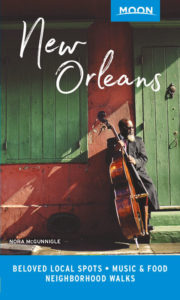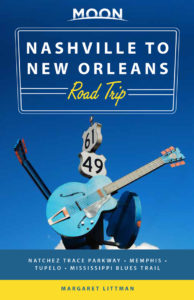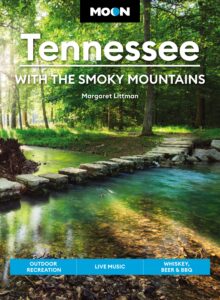Cajun Country
West of New Orleans and Baton Rouge, a world away from the grand houses lining the Mississippi River, the watery world known as Cajun Country spreads along the Gulf of Mexico. If you have the time to explore, the region offers an incredible range of delights for all the senses: antebellum plantation houses and moss-covered monuments set amid groves of stately old oak trees, with all manner of wildlife, from birds to gators, chirping and squawking away in the oddly still bayous, and the sound of accordions and the aroma of boudin sausages and boiling crawfish emanating from what can seem like every other doorway. Cajun Country is also sugarcane country: More than a half-million ac (202,343 ha) are cultivated each year, rising to 10 ft (3 m) in height by the end of summer, when the cane is chopped down and made into molasses at the many aromatic mills.
The name “Cajun” comes from the French-speaking Roman Catholic Acadians, 10,000 of whom were chucked out of Canada when the English took over in 1755. The Acadians were refused entry by the American colonies on the East Coast and had to make their way to this corner of still-French Louisiana, where they absorbed many other cultural influences while retaining their distinct identity.
US-90, the main route through Cajun Country, follows the Old Spanish Trail, the historic cross-country highway that linked St. Augustine and San Diego and in the early days of the automobile. Though the main route has been widened and “improved” countless times in the past century (it is often signed as “Future I-49”), many wonderful stretches of old country road still wind along shady bayous.
Wandering aimlessly and getting lost amid the many small backwater towns is half the fun of spending time here, but there are a number of places where the whole Cajun Country experience comes together in a concentrated dose. One of your main stops should be the historic town of St. Martinville, where the St. Martin de Tours Catholic Church (133 S. Main St., 337/394-6021) stands at the center of many blocks of ornate buildings and majestic oak trees, including the one featured in the Cajun-flavored Longfellow poem “Evangeline.”
St. Martinville is just north of New Iberia, the home of Tabasco sauce, perhaps Cajun Country’s most identifiable product, and just south of another great stop in Cajun Country: Breaux Bridge, the “Crawfish Capital of the World,” located just off the I-10 freeway, about an hour west of Baton Rouge.
Map of the Great River Road through Louisiana

















